Model: BT-BA43D
The repeater is working as a relay between the TV transmitter and receivers during the broadcasting of digital TV signal. It receives low-power TV signal from the TV transmitter via the Donor Antenna, linearly amplifies the signal and then retransmits it via the Coverage Antenna to the weak/blind coverage area.
The enhancer can amplify the signal within the customized band.
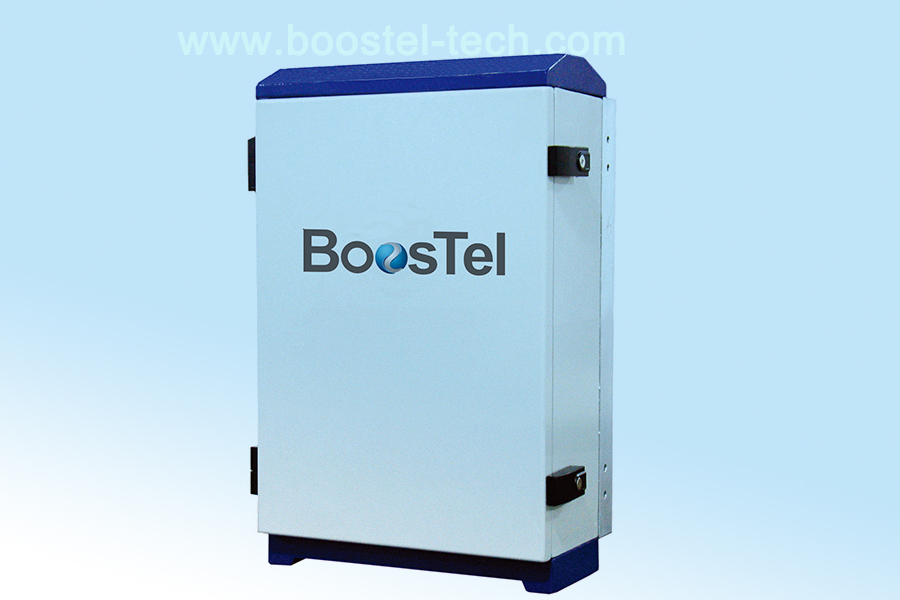
Â
Features |
Â
Aluminum-alloy casing with IP65 protection has high resistance to dust, water and corroding
No interference to BTS by adopting linear amplifier with high gain and low noise
Adopting filter with highly selectivity and low insertion loss eliminates interference between uplink and downlink
USB port provides a link to a notebook for local supervision or to the built-in wireless modem to communicate with the NMS (Network Management System) that can remotely supervise repeater's working status and download operational parameters to the repeater
Applications
Â
To expand signal coverage or fill signal blind area where  signal is weak or unavailable.
| Outdoor: | Airports, tourism regions, golf courses, tunnels, factories, mining districts, villages, … |
| Indoor: | Hotels, exhibition centers, basements, shopping malls, offices, parking lots, … |
Application Diagram |

Â
Â
Technical Specifications
Â| Items | Specification | ||
| Working Frequency | 136~174MHz / 400~480MHz | ||
| Number of Channels | 16 | ||
| Total channel capacity | (512) 256 (analog) 256 (digital) | ||
| Maximum Output Power | 43dBm | ||
| Maximum Gain | ≥85dB | ||
| Gain Adjustment Range | 1~31 dB @ step of 1 dB | ||
| Frequency Error | ≤ 0.05ppm | ||
| ALC (Auto Level Control) | Support | ||
| MER (Modulation Error Rate) | ≤0.8 dB and variation < 1dB @ 10dB compression | ||
| BER (Bit Error Rate) |  Degradation ≤ 1*10-2 | ||
| Voltage Standing Wave Ratio | ≤1.4 | ||
| Noise Figure | ≤8dB | ||
| In-band Ripple | ≤3dB | ||
| Max. Input Level | ≥-10dBm | ||
| Spurious Emission | ≤-36dBm | ||
| Shoulder Level | Per Channel | ±4MHz offset from central frequency: ≤-36dBc/30KHz | |
| Per Band | Offset from edge of working band ≥ 8MHz: ≤-40dBc or ≤-13dBm/30KHz | ||
| Offset from edge of working band ≥16MHz: ≤-60dBc or ≤-33dBm/30KHz | |||
| System Delay | ≤1.5μSec (without SAW fitler) | ≤5.0μSec (with SAW filter) | |
| In-band Inter-Modulation Attenuation | ≤-40dBc/30kHz | ||
| I/O Impedance | 50Ω | ||
| RF Connector | N-Type (Female) | ||
| Ingress Protection Level | IP65 | ||
| Temperature Range | Operation: - 25°C ~ + 55°C / Storage: -30°C ~ +60°C | ||
| Relative Humidity Range | ≤ 95% (non condensing) | ||
| Power Supply (customized) | AC 100-240V±15%, 50Hz | ||
| Backup Power Supply (optional) | 4 hours | ||
| Dimensions | 640mm X 400mm X 230mm | ||
| Weight | 35kg | ||
| MTBF | Min. 100000 hours | ||
| Operating Temperature | -30 ~ +60 °C | ||
| Relative Humidity Range | ≤95% | ||
| NMS Monitor Function(Option) | Door status, temperature, power sup., VSWR, output power, gain, downlink ATT, etc | ||
1.1 Installation
1.1.1 Steps for mounting on the Pole
- At Donor site, install the FSR Donor Unit, Donor Antenna, Link Antenna, and RF Cable as per specified plan and site layout. FSR Donor Unit can be pole-mounted using the brackets as shown below.
- Place M8 screws through the holes of H type brackets as shown in figure 1
- Fix combiner onto the H type brackets with M6 screws
- Fix H type brackets with combiner installed onto the pole with U type brackets and M8 screws
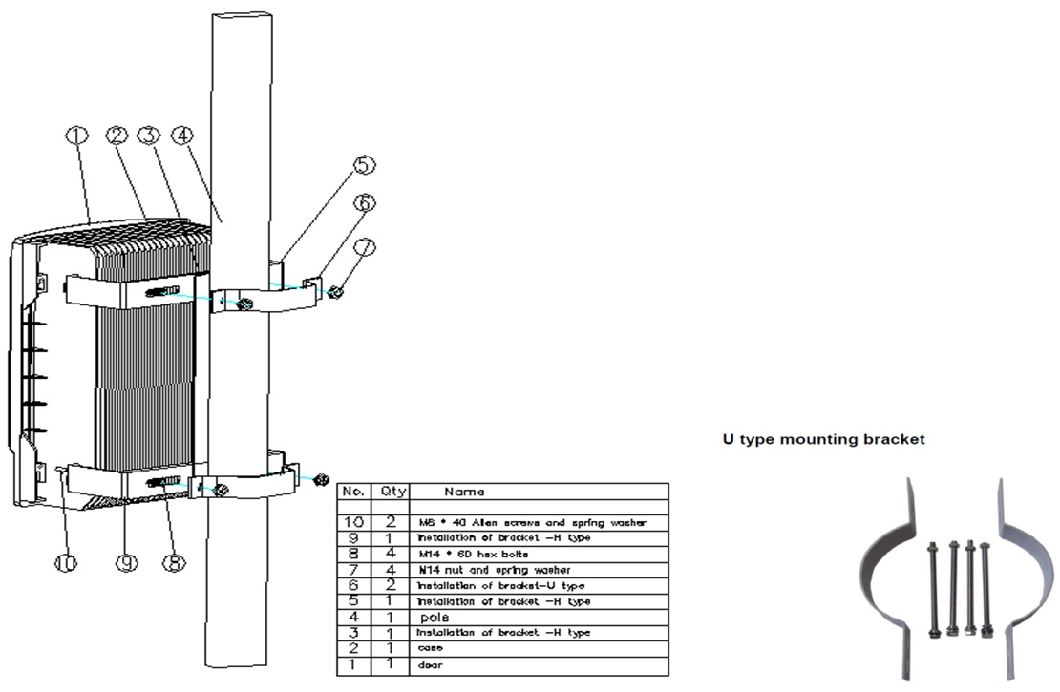
Â
Â
Figure 1 Repeater Mounting Bracket
Â
- Orient the Link Antenna of Donor Site to the direction of the Remote Site.
- Use Site Master to measure the VSWR of the RF cable from the Link Antenna. The value should be less than 1.5; Otherwise, check the connectors and the installation of the cable.
- Start Commissioning the Donor Unit .
- Proceed to the Remote Site.
- At Remote site, install the FSR Remote Unit, Link Antenna, Coverage Antenna, and RF cables. Remote Unit can be wall mounted or pole mounted depending on the approved plan.
- Orient the Remote Link Antenna to the direction of the Donor Site.
- Using Spectrum Analyzer, check the Link RSL; adjust the Link Antennas of both Donor and Remote until the required RSL is achieved. Link RSL can be computed using conventional path calculation method.
- Then, measure the VSWR of the RF cables connecting with the Link Antenna of Remote Unit. The value should be less than 1.5, otherwise, check the connectors and the installation of the cable.
- Start Commissioning the Remote Unit .
1.1.2 Steps for mounting on the wall
- At Donor site, install the FSR Donor Unit, Donor Antenna, Link Antenna, and RF cable as per specified plan and site layout. FSR Donor Unit can be wall-mounted using the brackets as shown below.
- Make four marks on the wall according to the dimension shown as figure 2
- Drill four holes at position marked
- Fix two pcs H type brackets on the wall with M8 expansion screws
- Fix combiner onto the brackets with M6 screws

Figure 2 Repeater Mounting Bracket
Â
 1.2 Commissioning
- Connect the RF cable from Donor Antenna to the spectrum analyzer and check if the Donor Antenna is receiving the correct frequency; and then measure the signal level of the said frequency (RSL). Adjust the antenna to make the readings approach the recorded value on the survey report. Record all readings.
- Inside the repeater, disconnect the uplink duplexer to the ICS module so as to cut any signal coming from air going to the uplink duplexer and thus protecting the amplifier from damaging. Connect a 30 dB attenuator to the output of the repeater; this attenuator will serve as a load for the repeater. The purpose of this attenuator is to protect the equipments from damaging.
- Turn ON the repeater. Observe the LED display on the NMS board. Check for any alarm. Under normal condition, the POWER LED should be always green and the RUN LED should be blinking, the ALARM LED should be not bright with red color.
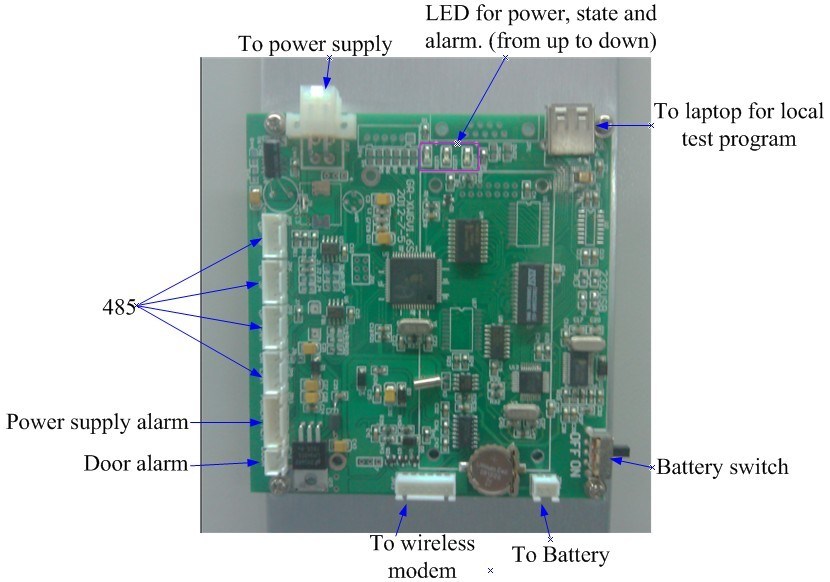
Figure3Â Interface of NMS Board
Â
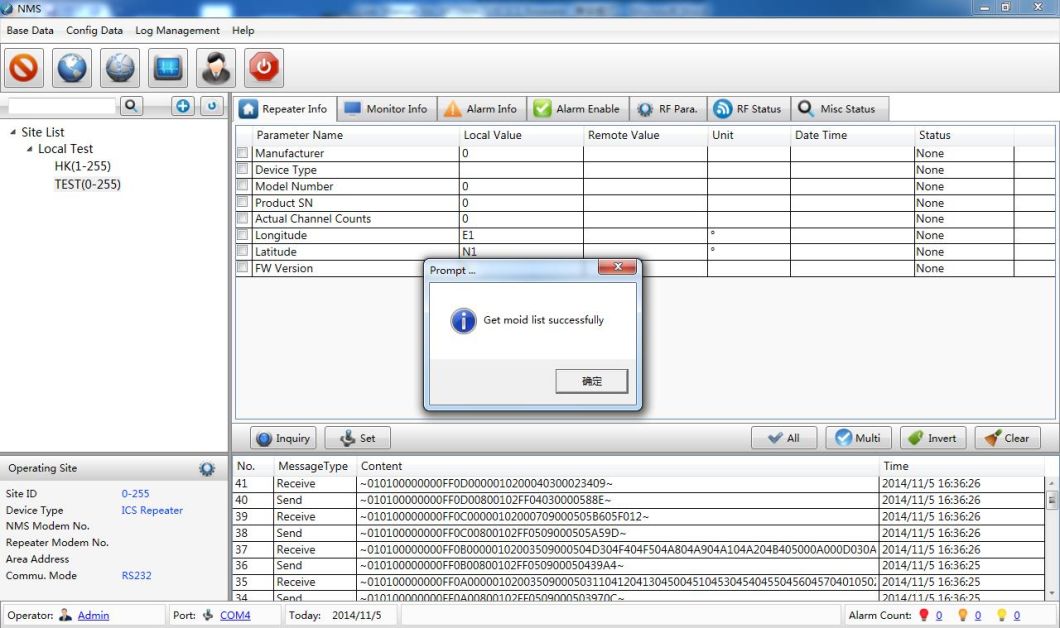
Â
Model: BT-BA43D
The repeater is working as a relay between the TV transmitter and receivers during the broadcasting of digital TV signal. It receives low-power TV signal from the TV transmitter via the Donor Antenna, linearly amplifies the signal and then retransmits it via the Coverage Antenna to the weak/blind coverage area.
The enhancer can amplify the signal within the customized band.

Â
Features |
Â
Aluminum-alloy casing with IP65 protection has high resistance to dust, water and corroding
No interference to BTS by adopting linear amplifier with high gain and low noise
Adopting filter with highly selectivity and low insertion loss eliminates interference between uplink and downlink
USB port provides a link to a notebook for local supervision or to the built-in wireless modem to communicate with the NMS (Network Management System) that can remotely supervise repeater's working status and download operational parameters to the repeater
Applications
Â
To expand signal coverage or fill signal blind area where  signal is weak or unavailable.
| Outdoor: | Airports, tourism regions, golf courses, tunnels, factories, mining districts, villages, … |
| Indoor: | Hotels, exhibition centers, basements, shopping malls, offices, parking lots, … |
Application Diagram |

Â
Â
Technical Specifications
Â| Items | Specification | ||
| Working Frequency | 136~174MHz / 400~480MHz | ||
| Number of Channels | 16 | ||
| Total channel capacity | (512) 256 (analog) 256 (digital) | ||
| Maximum Output Power | 43dBm | ||
| Maximum Gain | ≥85dB | ||
| Gain Adjustment Range | 1~31 dB @ step of 1 dB | ||
| Frequency Error | ≤ 0.05ppm | ||
| ALC (Auto Level Control) | Support | ||
| MER (Modulation Error Rate) | ≤0.8 dB and variation < 1dB @ 10dB compression | ||
| BER (Bit Error Rate) |  Degradation ≤ 1*10-2 | ||
| Voltage Standing Wave Ratio | ≤1.4 | ||
| Noise Figure | ≤8dB | ||
| In-band Ripple | ≤3dB | ||
| Max. Input Level | ≥-10dBm | ||
| Spurious Emission | ≤-36dBm | ||
| Shoulder Level | Per Channel | ±4MHz offset from central frequency: ≤-36dBc/30KHz | |
| Per Band | Offset from edge of working band ≥ 8MHz: ≤-40dBc or ≤-13dBm/30KHz | ||
| Offset from edge of working band ≥16MHz: ≤-60dBc or ≤-33dBm/30KHz | |||
| System Delay | ≤1.5μSec (without SAW fitler) | ≤5.0μSec (with SAW filter) | |
| In-band Inter-Modulation Attenuation | ≤-40dBc/30kHz | ||
| I/O Impedance | 50Ω | ||
| RF Connector | N-Type (Female) | ||
| Ingress Protection Level | IP65 | ||
| Temperature Range | Operation: - 25°C ~ + 55°C / Storage: -30°C ~ +60°C | ||
| Relative Humidity Range | ≤ 95% (non condensing) | ||
| Power Supply (customized) | AC 100-240V±15%, 50Hz | ||
| Backup Power Supply (optional) | 4 hours | ||
| Dimensions | 640mm X 400mm X 230mm | ||
| Weight | 35kg | ||
| MTBF | Min. 100000 hours | ||
| Operating Temperature | -30 ~ +60 °C | ||
| Relative Humidity Range | ≤95% | ||
| NMS Monitor Function(Option) | Door status, temperature, power sup., VSWR, output power, gain, downlink ATT, etc | ||
1.1 Installation
1.1.1 Steps for mounting on the Pole
- At Donor site, install the FSR Donor Unit, Donor Antenna, Link Antenna, and RF cable as per specified plan and site layout. FSR Donor Unit can be pole-mounted using the brackets as shown below.
- Place M8 screws through the holes of H type brackets as shown in figure 1
- Fix combiner onto the H type brackets with M6 screws
- Fix H type brackets with combiner installed onto the pole with U type brackets and M8 screws

Â
Â
Figure 1 Repeater Mounting Bracket
Â
- Orient the Link Antenna of Donor Site to the direction of the Remote Site.
- Use Site Master to measure the VSWR of the RF cable from the Link Antenna. The value should be less than 1.5; Otherwise, check the connectors and the installation of the cable.
- Start Commissioning the Donor Unit .
- Proceed to the Remote Site.
- At Remote site, install the FSR Remote Unit, Link Antenna, Coverage Antenna, and RF cables. Remote Unit can be wall mounted or pole mounted depending on the approved plan.
- Orient the Remote Link Antenna to the direction of the Donor Site.
- Using Spectrum Analyzer, check the Link RSL; adjust the Link Antennas of both Donor and Remote until the required RSL is achieved. Link RSL can be computed using conventional path calculation method.
- Then, measure the VSWR of the RF cables connecting with the Link Antenna of Remote Unit. The value should be less than 1.5, otherwise, check the connectors and the installation of the cable.
- Start Commissioning the Remote Unit .
1.1.2 Steps for mounting on the wall
- At Donor site, install the FSR Donor Unit, Donor Antenna, Link Antenna, and RF cable as per specified plan and site layout. FSR Donor Unit can be wall-mounted using the brackets as shown below.
- Make four marks on the wall according to the dimension shown as figure 2
- Drill four holes at position marked
- Fix two pcs H type brackets on the wall with M8 expansion screws
- Fix combiner onto the brackets with M6 screws

Figure 2 Repeater Mounting Bracket
Â
 1.2 Commissioning
- Connect the RF cable from Donor Antenna to the spectrum analyzer and check if the Donor Antenna is receiving the correct frequency; and then measure the signal level of the said frequency (RSL). Adjust the antenna to make the readings approach the recorded value on the survey report. Record all readings.
- Inside the repeater, disconnect the uplink duplexer to the ICS module so as to cut any signal coming from air going to the uplink duplexer and thus protecting the amplifier from damaging. Connect a 30 dB attenuator to the output of the repeater; this attenuator will serve as a load for the repeater. The purpose of this attenuator is to protect the equipments from damaging.
- Turn ON the repeater. Observe the LED display on the NMS board. Check for any alarm. Under normal condition, the POWER LED should be always green and the RUN LED should be blinking, the ALARM LED should be not bright with red color.

Figure3Â Interface of NMS Board
Â

Â
The Asus range of laptops is targeted towards the retail end-user market and hence the demand for the full range of Asus Laptop Charger is very high.
Asus laptop charger include Asus VivoBook charger series, ASUS Zenbook charger series, Transforme Book charger series and so on. If you want to find a replacement Power Adapter for Asus laptop, please feel free to contact us, we will help to select the correct OEM replacement Asus laptop Adapter for you.
The common Asus laptop charger specifications have 12V 3A 44W, 19V 1.75A 33W, 19V 2.37A 45W 19V 3.42A 65W, 19V 4.74A 90W etc, and the dc tip has 4.8*1.7mm, 4.0*1.35mm, 3.0*1.1mm, and special USB 6 pin, 40pin etc. Also Yidashun can produce 45W 5V/12V 2A 20V 2.25A type c adapter for Asus
Yidashun's laptop adapter is with smart IC to protect your laptop with over current protection, over load protection, short circuit protection, over heat protection. And all our Asus laptop adapter is Brand New Replacement Product, works as Genuine parts, 100% OEM Compatible!!
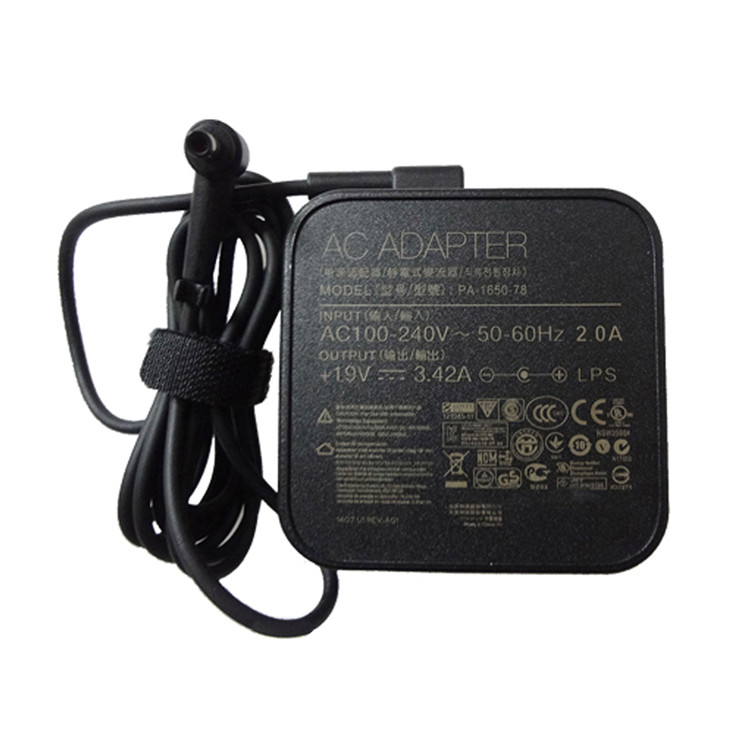
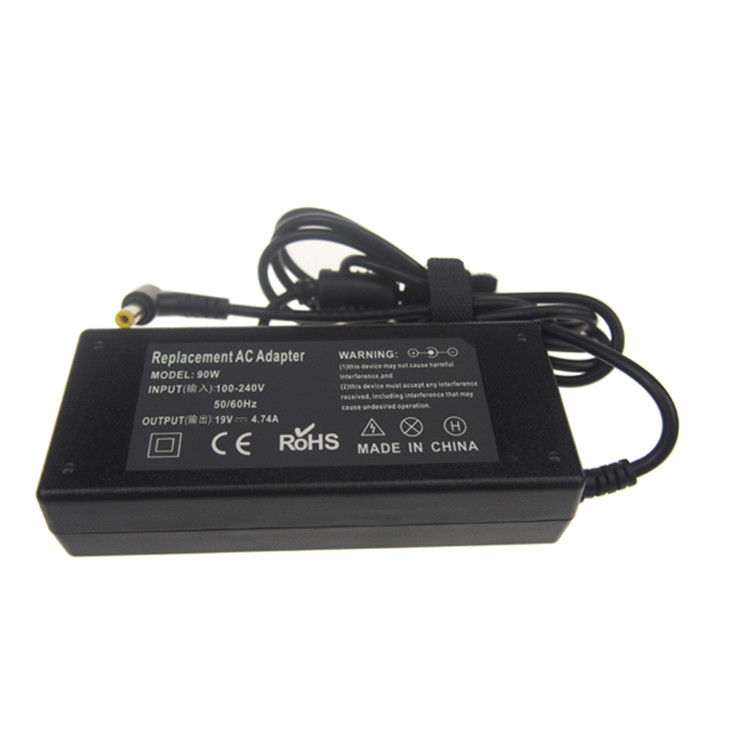

Asus Laptop Charger,Asus Charger,Asus Computer Charger,Asus Notebook PC Charger
Shenzhen Yidashun Technology Co., Ltd. , http://www.ydsadapter.com